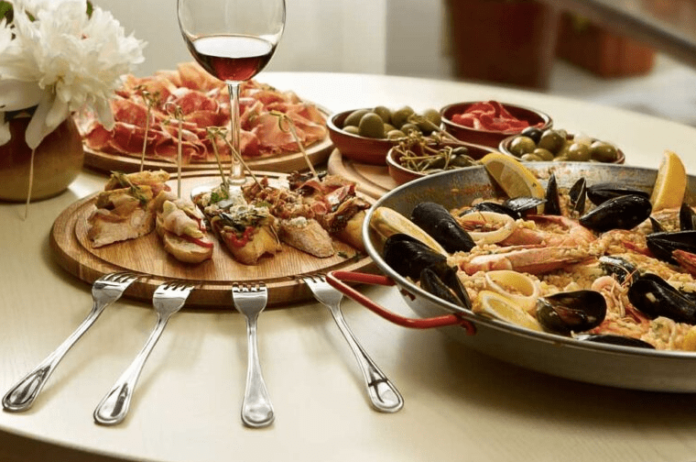Traditional dishes known as firuñais come from the center of Spain’s culinary heritage. These wonderful candies have been a mainstay of Spanish cuisine for generations because of their distinctive textures and depth of taste. This piece will explore the intriguing past, cultural relevance, and contemporary alterations of firuñais, providing readers with an all-encompassing comprehension of this cherished gastronomic treasure.
Table of Contents
The History and Origins of Firuñais
Ancient Roots: Tracing the Origins
Firuñais originated in ancient Spain, when they were made with basic materials that were readily available in the area. These earliest Firuñais were heavily influenced by Iberian Peninsulan cooking customs, utilizing flavors and methods that had been handed down through the years.
Evolution from Ancient Culinary Practices
Firuñais began simply and developed into the sophisticated delicacies we know today over time. The techniques and recipes for preparing Firuñais evolved together with Spain’s cultural landscape. Every area contributed its own special touch, creating a complex tapestry of variants that capture the variety of Spanish culinary customs.
Cultural Significance: Why Firuñais Matter
Role in Spanish Culture and Cuisine
A unique position is reserved for firuñais in Spanish food and culture. They represent customs and communities and are more than just food. Firuñais, typically consumed during celebrations and get-togethers with loved ones, unite people and foster enduring relationships and memories.
Importance in Festivities and Rituals
Firuñais play an important role in religious ceremonies and local festivities in various parts of Spain. These treats are frequently made in big batches, distributed to loved ones, and given as gifts. Their participation in these activities highlights the significance of their culture and the happiness they bring to festive occasions.
Regional Variations and Traditional Methods
The varied topography and cultural influences of Spain have resulted in a multitude of regional Firuñais. Every location, from the coastal regions to the inner mountainous areas, has its own special recipe that showcases a diverse range of flavors and cooking techniques. This variety demonstrates how versatile and timeless Firuñais are across the nation.
Ingredients That Define Firuñais
Key Ingredients: Unveiling the Flavors
A combination of essential components that haven’t changed throughout time gives Firuñais its unique flavor and texture. These usually consist of flour, olive oil, and a range of regional spices and herbs. All Firuñais recipes share the same dedication to authenticity and excellence, even though the specific components may differ.
Locally-Sourced Ingredients
The utilization of products produced locally is one of the distinguishing features of true Firuñais cuisine. This method supports regional farmers and producers while also guaranteeing freshness and quality. Firuñais are a true expression of their origin, with every mouthful demonstrating the link to local terroir.
Traditional Recipes
Firuñais’s traditional recipes have been passed down through the years and are frequently treasured family secrets. The essence of Firuñais is preserved through these techniques, guaranteeing that every batch maintains the aromas and textures that have made them a cherished component of Spanish cooking.
Variations and Adaptations
Different Versions Across Spain
Firuñais spread throughout Spain, with each region creating its own variant that led to a great variety of varieties. Some regions prefer a savory flavor profile, employing elements like garlic and peppers, while others like a sweeter taste, combining honey and almonds. Because of its diversity, discovering Firuña is a gastronomic journey.
Unique Adaptations
Apart from the geographical variations, modern chefs and home cooks have added their own unique touch to Firuñais by experimenting with novel ingredients and cooking methods. These alterations appeal to contemporary palates by bringing in novel flavors and textures while preserving the history
Innovative Approaches
Beyond just ingredients, Firuñais preparations are inventive. With the help of cutting-edge culinary methods like sous-vide and molecular gastronomy, inventive chefs have reinvented the conventional approaches. Firuñai are brought to new heights by these creative methods, which highlight their adaptability and classic charm.
How to Make Firuñais: Step-by-Step Guide
Step 1: Gathering Ingredients and Tools
You’ll need a few staple kitchen tools and a selection of premium ingredients to make Firuñais. What you’ll need is as follows:
Bread Wheat Olive oil
regional spices and herbs
Nuts, honey, garlic, and peppers are optional.
Make sure you have a rolling pin, baking sheets, mixing basins, and a dependable oven or fryer. Your Firuñai will taste better and be more authentic if you source real ingredients from specialty shops or local markets.
Step 2: Preparation and Cooking Techniques
Combining the Dough: In a sizable mixing basin, combine the flour, olive oil, and selected spices. Blend until a uniform dough is formed.
Taking Form in the Firuñai: To get the necessary thickness, roll out the dough on a surface dusted with flour. With a knife or cookie cutter, cut into shapes.
Cooking: You can bake or fry the Firuñai, according on the recipe. Turn the oven on to 375°F (190°C) for baking, and bake until the food is golden brown. To fry, add a pan of heated olive oil and fried until crispy.
Step 3: Serving Suggestions and Pairings
Firuñai are good either by themselves or with other dishes that go well with them. Conventional combinations consist of:
Wines: To bring out the flavors, try a glass of Rioja or Tempranillo from Spain.
Cheeses: For a delicious treat, serve with a variety of regional cheeses.
Dips: For extra flavor, pair with dips like romesco sauce or aioli.
Health Benefits of Firuñais
Nutritional Value and Dietary Considerations
Moderate consumption of firuñai can incorporate them into a well-balanced diet. They are frequently prepared using healthful components like olive oil, which has a high fat content. Using herbs and spices can also supply a variety of minerals and antioxidants.
Potential Health Benefits
Heart Health: One important component, olive oil, is well-known for having heart-healthy qualities.
Digestive Health: The spices and herbs used in firuñai have anti-inflammatory and digestive properties.
Alternative Ingredients for Healthier Versions
There are better options available for people with dietary preferences or restrictions:
Gluten-Free Flour: Use cornmeal or rice flour in place of regular flour.
Low-Sodium Options: Use salt substitutes or cut back on salt consumption.
Baking as an Alternative to Frying: To cut down on oil use, bake instead of fry.
Firuñai in Contemporary Gastronomy: Present-Day Applications and Culinary Trends
Firuñai are becoming a common sight on the menus of hip restaurants and upmarket dining establishments in modern cuisine. These classic treats are being reinvented by chefs and added to fusion and gourmet meals.
Firuñais in Modern Gastronomy
Contemporary Uses and Culinary Trends
Fine dining establishments have adopted the Firuñas, serving them as elegant appetizers or as part of tasting menus. They are popular among foodies because of the way they combine classic flavors with contemporary presentation.
Presence in Upscale Restaurants
Firuñai are popular among people looking for genuine and distinctive gastronomic experiences, especially with the advent of food culture and culinary exploration. They are a popular with cooks and eaters alike because of their extensive history and adaptability.
Cultural Revival: Preserving Traditions
Initiatives to Preserve Traditional Recipes
There is a growing push to maintain the customs and methods of Firuñai cuisine. To ensure that these customs are preserved, food historians and cultural groups are recording them
Role in Cultural Heritage Preservation
Firuñai are essential to maintaining Spain’s gastronomic culture. Communities can preserve these customs and pass on to future generations their knowledge of food and cultural identity.
Community Engagement
Firuñai are frequently included at local festivals and culinary fairs, offering a chance for communities to unite and commemorate their common history. These gatherings promote a feeling of pride and community while preserving the heritage.
Conclusion
Firuñai represent Spain’s rich gastronomic and cultural traditions and are more than just a delectable dessert. You may connect with the customs and flavors that have formed Spanish gastronomy for centuries by traveling through and experiencing Firuñai. Hence, why not attempt creating your own Firuñai and relish the flavor of Spain’s rich culinary heritage?



